I own three 7.5AH Ego batteries. My earliest had a manufacture date of 2014 (although I purchased it in 2017 with a mower manufactured in 2016). I now have four years of operation on this battery.
As shown in the graph, the capacity dropped off over time (down to a low of 260 watt hours in year 3, which is 63% of the original 410 watt hour capacity), but in year 4 it has actually increased a bit to 290 watt hours (70% of the original capacity).
My 2nd 7.5AH battery was purchased in July of 2018 (manufactured in May of 2018).
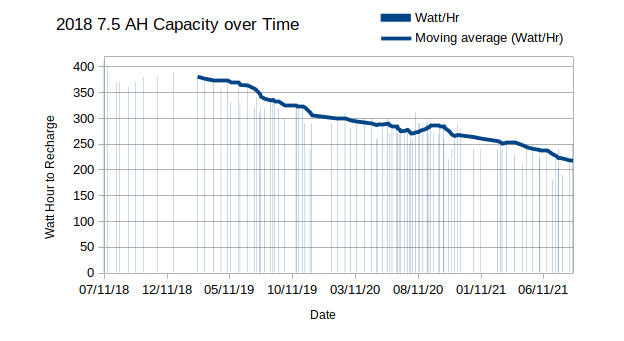
As you can see, its graph has gone down, and so far hasn’t popped back up. At the three year mark it is also down to a 260 watt hour capacity (63% of it’s new capacity).
My third 7.5AH battery has a 2019 manufacture date, but it’s still in its first year of “use”, so I don’t have a fancy graph for it yet, although I have started to include it in the comparison bar graph below:
So far, all three of my 7.5 AH batteries have followed a very similar capacity vs time curve, and you can expect one of these batteries to retain an average of 90% capacity in year 1, 72-75% capacity in year 2, and 63% capacity in year 3.
[Plus, they MAY bounce back up to 70% capacity in year 4, if the other two follow the path taken by my first battery.]
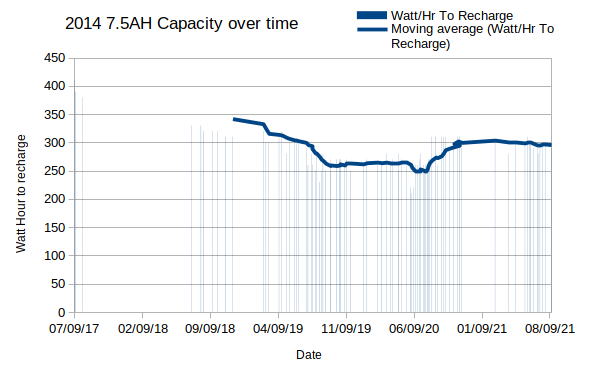
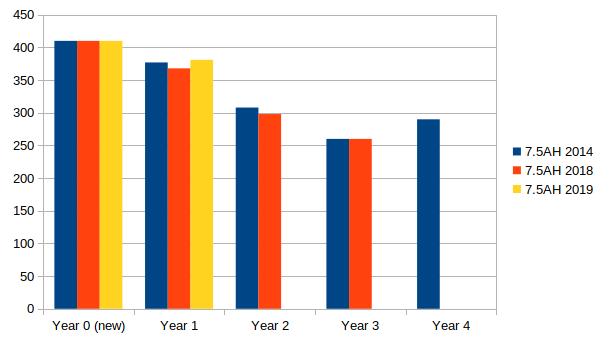
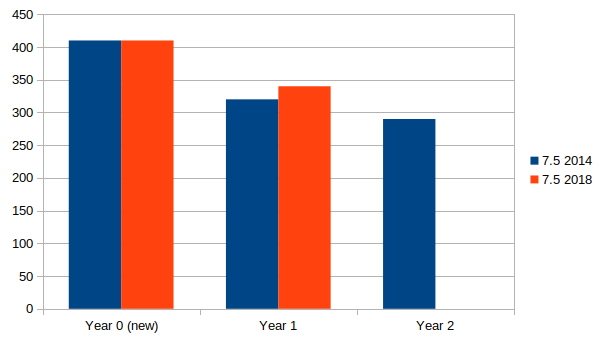
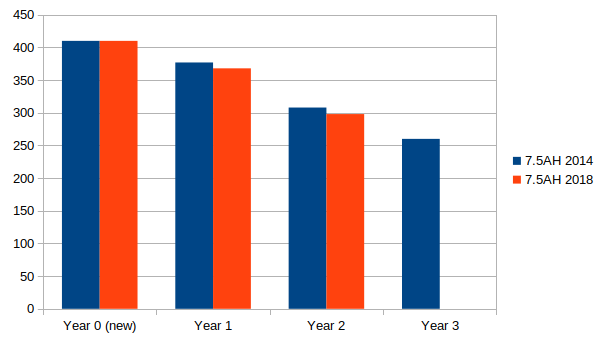
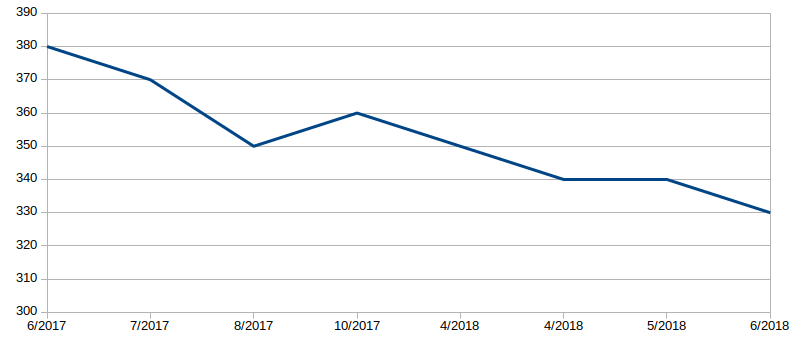
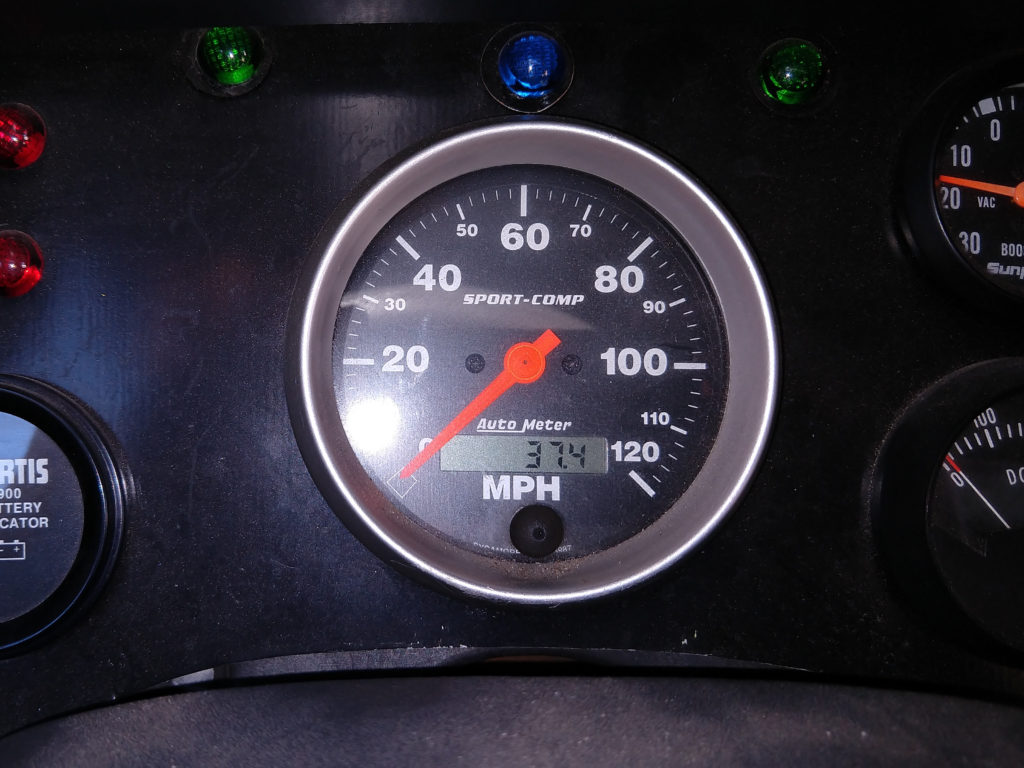
Love all the Ego stuff you’ve covered.
What charger are you using?
What are you using for the Wh calculation?
What charge state do you keep them in the off season?
I really wish Ego would add an 80% SOC button and a 30% storage button on their chargers. It would really increase battery life with almost no cost.
I use the Ego fast charger for my 5.0 and 7.5AH batteries, and the regular charger for the 2.5ah batteries.
I use a Kill-a-Watt meter (like this: https://amzn.to/3uaR2or ) plugged into my fast charger to see how many Wh it takes to re-charge the 7.5 AH batteries (from when they die in my lawnmower).
In Florida we don’t so much have an “off” season as a “mow every 10 days instead of every 5 days” season….So I never “idle” any of the batteires, just store them fully charged. (If they had an “stop charging at 80%” setting I would use it.)
So, You would charge more or less every 10 days , how many harging cycles goes thru a battery -average. That is 40 times a year – they should last 1000 cycles with all the superlative ( self proclaimed) technologies they put in? Or that’s just another BS. I’m curious, because I bought the same brand- now I just a programmable electronic load (Aliexpress) $35ish- let’s see what figures I’m getting. I’m building an electric bike, using EGO batteries, for convenience and relative cheap price. Bike batteries are a puzzle unless it states what cells are using. But to your graphs showing that after 3 Years you lost 2/3 of the nominal capacity is not good at all.Thanks for sharing.
I lost 40% or 4/10ths or 2/5ths of the new capacity at the 3 year mark. This leaves 60-70% of the original capacity still usable.
I’d say 40-52 cycles per year. So the number of rated cycles isn’t the issue, it’s more the calendar age (and the fact that the lawnmower is a high current / high temperature discharge load). Unless you are building a monster of an e-bike, I expect that it will draw less power than my lawnmower, so you may get better performance and longevity.
Overall, I feel that the performance of the Ego batteries is in line with laptop and cell phone battery performance (and that of other electric lawn care and hardware store power tools).
Instead of buying gas, spark plugs, filters, and a yearly tuneup, you buy a new battery every few years. The total cost of ownership is similar, but the ease of use instant electric start/stop, quiet operation, upright storage, etc gives a better experience.
I wonder if battery capacity reduces more slowly if one uses the standard, slow charger?
Presumably, fast charging requires increased battery cooling to handle the higher current charging rate, and battery temperature is probably the main enemy of Lithium-ion batteries.
It would be great to see if someone else’s experience is different because of only using the standard slow charger.
It is possible, although in the case of the 7.5 AH batteries, the fast charger does a maximum of 420 watts or 7.5 amps, which would be a 1 C charge rate, so that shouldn’t be too fast for them.
I am just learning about Li-ion battery technology and how to work with its performance characteristics, so your experience with the EGO batteries is very interesting to me.
At this point in my learning curve, I would guess that your fast annual drop off in battery capacity is due to a perfect storm of operational adversities that are problematic for Li-ion batteries:
High current draw application (lawn mower) that heats batteries during discharge.
High current charging cycles (fast charger) that heats batteries during charging.
High temperature & high humidity operational environment in Florida.
All of these thermal impacts combined might well shorten the life of Li-ion batteries.
It would be interesting to be able to log the internal battery cell temperatures during both charging, discharging and storing over time to see what is going on inside the battery packs.
Anyway, thanks for sharing your experience and doing an excellent job of analyzing your battery performance over several years. Invaluable to the entire EGO user community!
This is very good information. Thanks. I bought my Ego Lawnmower with a 5.0Ah in Sept 2018. I could tell it was losing some capacity but this year was a shocker. It used to last about 35-40 min in the mower, now it’s maybe 10 min. I bought a string trimmer at the same time. That 2.5Ah seems to be OK – it actually lasts longer than the 5.0Ah now.
The batteries do degrade over time, but also keep in mind that the simple act of sharpening your blade, cutting the grass at a higher level, or cutting your grass more frequently can also increase runtime by reducing the total work the mower needs to do.